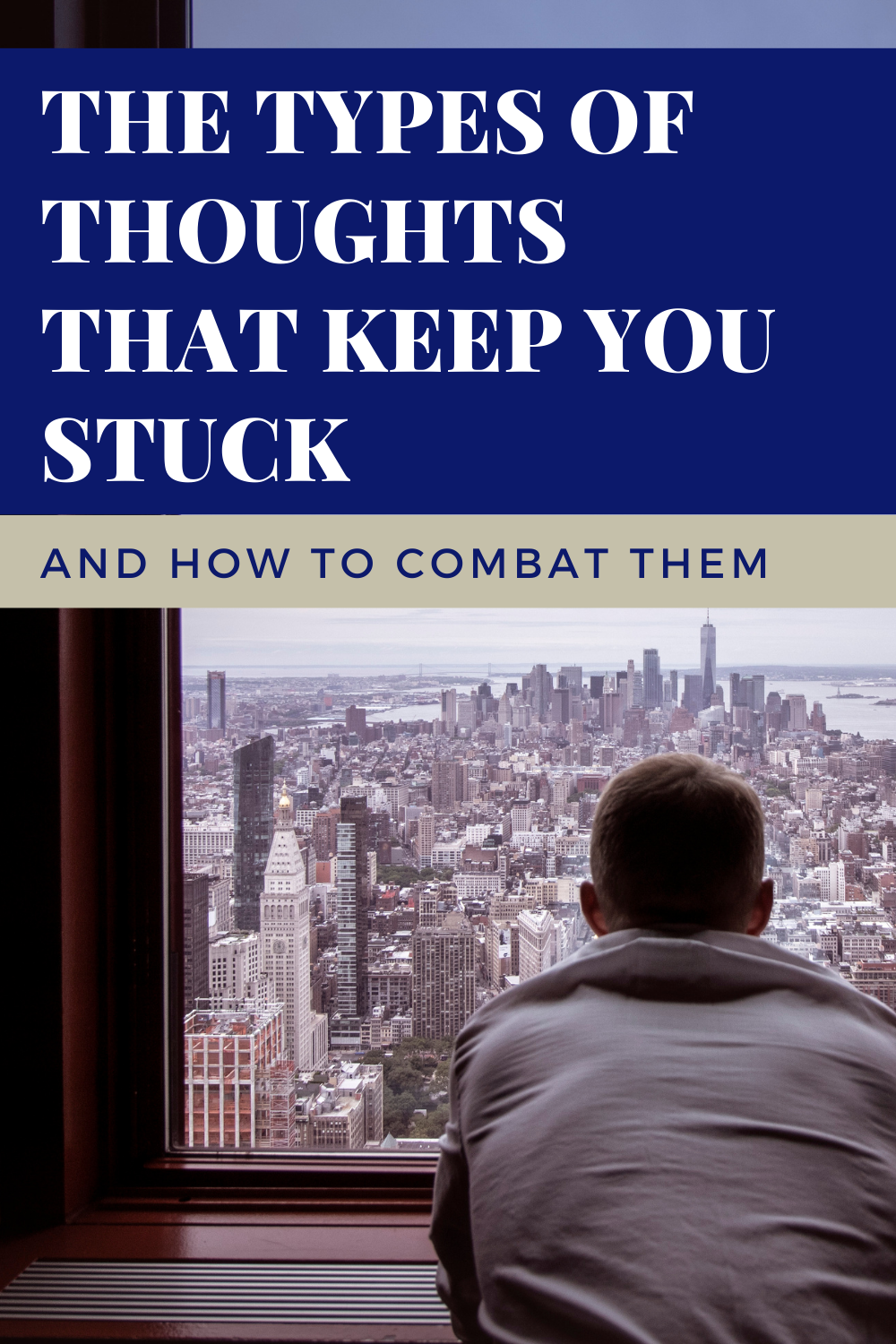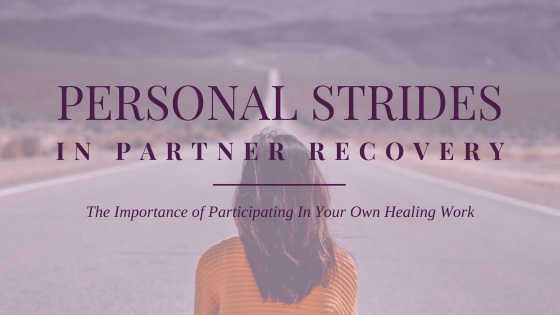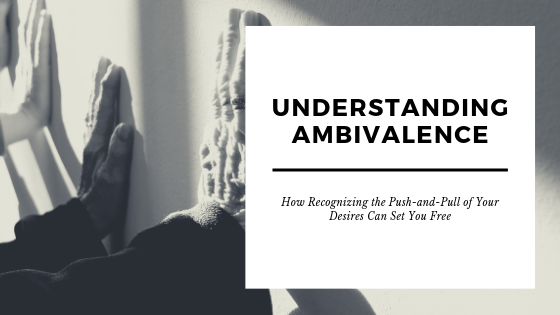Imagine you wake up in the morning full of energy, looking forward to what you have planned for the day. As you step into the kitchen to make your coffee, you think of the big presentation you have coming up for work. Suddenly, you start feeling afraid and nervous as you imagine everything that could go wrong. Thoughts of insecurity begin to flood your mind: “I can’t do this. I don’t know enough to give this presentation. This is going to be a disaster.”
The energy you felt getting out of bed is draining fast. After pouring yourself a cup of coffee, instead of tackling your emails or the tasks you had planned to complete in the morning, you end up sitting on the couch and scrolling through Instagram. Maybe you give up on the coffee altogether and go back to bed. Or you pick a fight with your spouse when they walk into the kitchen to let out some of the stress and anxiety you’re feeling.
Later in the day, you think back and wonder, “How in the world did that happen? My morning was going great, and then everything fell apart so quickly. Why does this happen to me?”
Oftentimes, we find ourselves in frustrating patterns of behavior that make us unhappy, but we’re not quite sure how to change them. Often these concerns lead people to seek out counseling. They know there’s something wrong, but they just aren’t sure how to fix it.
Luckily, there is a tool for making sense of these thoughts, behaviors, and feelings: the ACT matrix. It is a guide to seeing your behavior within the framework of what inner and outer experiences move you toward or away from what really matters to you.
The ACT Matrix
The ACT Matrix was developed out of Acceptance and Commitment Therapy (ACT), which emphasizes the balance between acceptance of your current reality (supported by mindfulness and self-soothing strategies) and commitment to change what is within your control (supported by behavior change strategies and skill-building). The goal of this framework is to move toward change with compassion and self-understanding, integrating nonjudgmental awareness and making peace with challenging emotions and experiences.
The ACT matrix tool was developed as a way to visually represent this framework. It was created by Kevin Polk, Jerold Hambright, and Mark Webster for use with trauma and addictions.
Credit: Dr. Kevin Polk
The matrix helps you see the function of your behaviors, or how and why they work (or don’t work) for you. Understanding these foundations can help you take a more holistic, compassionate, and long-lasting approach to change.
The Horizontal Axis: Moving Toward vs. Away
Looking at the diagram above, you’ll notice a horizontal line with the labels “toward” and “away.” This axis represents how we move in each of these two directions. We have hard-wired biological responses that move us toward things that feel important to us and away from potential threats or what we do not want. Consider the instincts of animals in the wild: they move toward things that provide something they need (food, shelter, other animals of their kind) and away from threats (predators, wildfires, humans).
The Vertical Axis: Inner vs. Outer Experience
As humans, however, we don’t live our lives purely on instinct. We can observe and respond to stimuli that are outside of ourselves, but we also have a vibrant inner world that influences and shapes our responses. We can use reason, control impulses, make decisions, and weigh options.
The vertical axis on the diagram represents this shift between our inner and outer worlds. Our outer experiences are things we do that other people could observe, including behaviors or actions. Our inner experiences are what happens inside our mind and body: thoughts, feelings, sensations, decisions, etc.
In every moment of our lives, we exist somewhere on this vertical line. Either we are more connected to our internal world, absorbed by the thoughts and feelings associated with it. Or we are more connected to the outer experience, what we’re doing or what’s happening around us.
The Matrix as a Road Map
Consider that each of these axes are a continuum. Rather than living in all-or-nothing, this matrix provides a road map to identify what can move you closer to one side or the other. There are a range of possibilities to explore along each of these lines.
Creating Your Matrix Map
Now, let’s consider how you can reflect on your personal values to fill out this road map and identify what patterns are keeping you stuck. We do this through a series of four questions that guide you to identify how you are moving toward or away from your goals, and how your internal experience as well as your behavior play a role in that dynamic. Let’s start with the bottom right quadrant.
Quadrant 1 (bottom right - moving toward, inner experience)
What matters to me? What is important to me? What values do I hold?
Write a list in this quadrant of what is most important to you. Aim for about 4-5 people, things, concepts, values that are most significant. Reflect on what they mean for you. For example, if one of your values is “happiness,” consider what your ideal picture of happiness would look like.
Quadrant 2 (bottom left – moving away, inner experience)
What thoughts, feelings, urges, or other internal experiences get in the way of living into those values? What limits me from being able to have what is important to me?
Reflect on the internal experience that gets in the way of the full expression of those values. Perhaps your lack of confidence prevents you from being able to date and pursue marriage, which is valuable to you. Maybe you feel bouts of intense sadness and grief over the loss of a loved one, which is preventing you from living out your goal to achieve at work or pursue friendships.
Quadrant 3 (top left – moving away, outer experience)
When I have the thoughts and feelings in quadrant 2, what do I do? How do I respond in observable behaviors?
Now it’s time to see how these thoughts and feelings influence your behaviors and how you respond. These may include attempts at coping with the troubling internal experience, for better or for worse. What you’re looking for here is anything that moves you away from what is important to you. For example, you may find yourself overeating every time you feel lonely. Or you drink more when you’re dealing with a storm of insecure thoughts. Perhaps you withdraw and isolate from others when you’re feeling lonely or rejected.
Quadrant 4 (top right – moving toward, outer experience)
What can I do to move me toward what is important to me?
The ultimate goal of this guide map is to help you brainstorm and define ways to increase movement toward the things that are important to you. By reflecting on the first three quadrants, you may be able to clarify for yourself what behaviors support your values and goals. You might identify initiating a date with your spouse as an action that moves you toward intimacy in your marriage. Or you might include exercise or getting more sleep if one of your values involves health and fitness.
Feedback Loops
Often where we get stuck is in the interplay between quadrants two and three. Look at the behaviors you listed in quadrant 3. When you engage in those behaviors, how do they impact your thoughts, feelings, urges, and inner experience? Typically, they either reinforce the internal experience that’s already happening, or they create another inner dynamic that moves you away from what you value.
When we have an inner experience that is challenging, distressing, or painful, we respond to that experience with behaviors that reinforce it and send us back into the pain. No wonder we find ourselves stuck in those loops! But there’s good news: once you’re aware that this feedback loop is happening, you can change the way you interact with it, often by using the behaviors involved in quadrant 4.
Compassion
One strength of the ACT matrix approach is looking at these behaviors with a nonjudgmental lens. When you see where they fit on this road map, you can identify how they function. All behaviors have a function and work to serve that function, even if they seem confusing or counterintuitive. Another way to explain this is that everything you do works for you in some way – otherwise, you wouldn’t be doing it. What you need to ask yourself is what function that behavior is serving in your life.
For example, if you find yourself endlessly scrolling through social media, perhaps that behavior is serving a numbing function. Maybe it is a way to feel connected when you’re isolated from loved ones. Or perhaps it’s a springboard for creative ideas. Each of these potential functions (and sometimes a combination of several) drives and motivates this behavior.
Seek to offer kindness to yourself and explore where you are on the continuum without judgment, exploring where you might want to go and what steps you can take to get there.
Agency
Some versions of this matrix include a circle at the center that overlaps all quadrants. This circle represents you as the observer, becoming aware of the system of thoughts, emotions, and behaviors that influence you. Awareness of the system can lead you to reflect on what’s in charge of the systems in place: for example, who is in charge of choosing what’s important to you (quadrant 1)? Who is having these thoughts and emotional responses (quadrant 2)? Who is acting on these behaviors in response to the thoughts and feelings (quadrant 3)? The answer to all these questions is you.
This demonstrates how much agency you have over these areas of your life, empowering you to change. If you are the one in charge, then you are the one capable of creating change in your life. You can become aware of the feedback loops in your life and explore alternative options. You can learn new skills to move you toward what is important to you. Even small changes like intentional mindful breathing can shift your experience between your inner and outer world, demonstrating the control you have over your moment-by-moment experience.
Spend a day observing your movement on this ACT matrix: how your thoughts and actions influence how connected you are to your inner or outer experience, or how much you are moving toward what feels important or moving away from it. Become more conscious of the behaviors that move you toward what matters to you and to reduce the intensity of the feedback loops you experience.
If you find yourself noticing these patterns but still feeling stuck or unable to change, that’s where a good therapist can help you work through those stuck points.
Additional ACT Matrix Resources
Kevin Polk, one of the creators of the ACT Matrix, has trainings to understand this concept further through his ACT Matrix Academy.
Mark Webster, another contributor to the matrix, has a three-part YouTube series demonstrating how it works.
Jacob Martinez, an ACT matrix trainer, has resources at his ACT Naturally website.






















